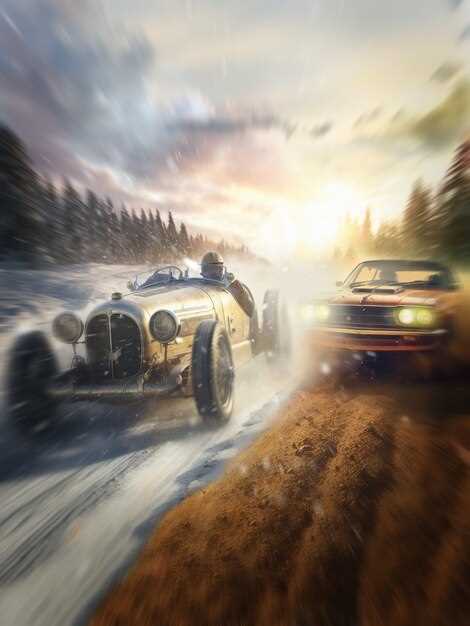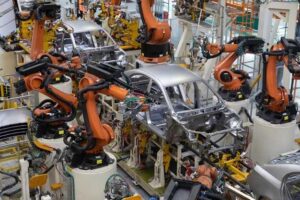Explore the world of cinema through the lens of its most iconic vehicles. These cars not only served as modes of transportation for characters but also became symbols of their eras, reflecting cultural shifts and technological advancements. From the classic muscle cars to futuristic rides, each has left an unforgettable mark on the silver screen.
The DeLorean DMC-12 from “Back to the Future” stands out as a symbol of time travel and adventure. Its unique stainless-steel design, combined with gull-wing doors, captures the imagination. The film’s clever writing and innovative use of time mechanics turned this car into a timeless classic.
Shifting gears, the Ford Mustang GT 390 in “Bullitt” exemplifies the raw power and style of the late 1960s. Steve McQueen’s legendary chase scene through San Francisco set new standards for action sequences, solidifying the Mustang’s status as an American icon.
Then there’s the Aston Martin DB5 featured in “Goldfinger,” which redefined the role of vehicles in spy cinema. With its array of gadgets and sleek design, this car gave James Bond an edge that became synonymous with his character, influencing countless spy films that followed.
Each of these vehicles carries a story far beyond their wheels. They reflect not just the characters who drove them but also the sentiments and aspirations of the audiences. These iconic cars truly shaped cinematic history, leaving legacies that continue to inspire filmmakers and car enthusiasts alike.
The Science Behind Creating Memorable Movie Cars
The design of iconic movie cars combines engineering with storytelling. Focus on distinctive features that reflect a character’s personality. For instance, sleek designs often denote sophistication, while rugged shapes suggest strength and resilience. Recognize that shape and color influence viewers’ perceptions, so choose palettes that align with character attributes.
Utilize technology for practical effects, ensuring cars have kinetic appeal on-screen. Advanced camera techniques highlight movement, making cars feel lively and integrated into the plot. Employ sound design to create unique auditory signatures. Custom engine sounds enhance the visceral experience, making vehicles unforgettable.
Consider the cultural impact of the car’s design. Cars can symbolize freedom, rebellion, or nostalgia, informing the audience’s emotional connection. Research influential automotive styles from particular eras to evoke specific sentiments. For example, a classic muscle car can resonate with themes of power and rebellion.
Build a backstory for the vehicle. Just like characters, cars benefit from rich histories that add depth. Incorporate elements such as modifications or previous owners that reflect narrative themes. Utilize practical effects for stunts that showcase the car’s capabilities, creating compelling visuals that stay in the audience’s memory.
Lastly, balance realism with fantasy. While some cars are driven by realism, others thrive in exaggerated designs that captivate imaginations. Striking a balance ensures the car resonates within the movie’s universe while remaining relatable to the audience.
How Car Design Influences Character Development in Films
Car design significantly shapes how audiences perceive characters. A sleek, high-performance vehicle often reflects ambition and power, complementing characters like Tony Stark in “Iron Man.” The design choices communicate personality traits, such as confidence and wealth.
Conversely, a rugged, vintage car can evoke nostalgia and a down-to-earth persona. In “Thelma & Louise,” the iconic Ford Thunderbird signifies freedom and rebellion, enhancing the protagonists’ journey. The vehicle embodies their quest for independence and escape from societal norms.
A well-designed car can also act as a narrative device. In “Mad Max: Fury Road,” vehicles symbolize survival and adaptation in a post-apocalyptic world. The design of the War Rig, with its enormous wheels and practical features, mirrors Furiosa’s strength and resourcefulness.
Moreover, car design speaks to the relationships between characters. In “Fast & Furious,” the diverse range of vehicles represents the backgrounds and personalities of the racing crew. Each car illustrates individual strengths and traits, fostering group dynamics and camaraderie.
Consider how a character’s vehicle transforms as the story progresses. In “Back to the Future,” the DeLorean evolves from a time machine to a symbol of adventure and friendship, reflecting Marty McFly’s growth and development. This shift showcases how a car can parallel character arcs and emotions.
Filmmakers often use color and style to enhance themes. The bright, flashy designs of characters like Dominic Toretto convey boldness and bravado, while muted colors signify seriousness or conflict. These visual cues guide audience perceptions and emotional connections.
Ultimately, car design plays a pivotal role in enriching narratives and deepening character development, leaving a lasting impact on viewers. By carefully considering these elements, filmmakers craft memorable stories that resonate on multiple levels.
Iconic Car Chases: Key Moments That Captivated Audiences
One of the most thrilling car chases in cinema history occurs in The French Connection. The stunning pursuit through the streets of New York, driven by Gene Hackman’s character, remains etched in viewers’ memories. The combination of speed, realism, and the use of a moving subway train created an unparalleled sense of urgency.
Another unforgettable chase is found in Bullitt, starring Steve McQueen. The San Francisco hills provided a breathtaking backdrop as McQueen navigated sharp turns, showcasing both the driver’s skill and the raw power of the Mustang. The chase’s authenticity and intensity captivated audiences, setting a new standard for future action sequences.
Mad Max: Fury Road redefined chase sequences by transforming them into a full-fledged spectacle. The relentless pursuit across a post-apocalyptic wasteland featured a myriad of creatively designed vehicles, each contributing to the chaotic beauty of the chase. The film elevated the genre by blending choreography with high-octane action.
In the realm of animated films, Cars delivered an engaging chase that combined humor and heart. Lightning McQueen’s race across the country, culminating in the thrilling finale at the Piston Cup, offered a unique twist on the classic chase narrative, appealing to audiences of all ages.
The car chase in Getaway provides an adrenaline-pumping experience as Ethan Hawke’s character races through abandoned streets, emphasizing tight angles and close-up shots that immerse viewers in the action. This sequence showcases how modern editing techniques can enhance the tension of a pursuit.
In Drive, Ryan Gosling’s performance combined with a minimalist style resulted in a quiet yet impactful chase scene. The blend of atmospheric music and stark visuals created a haunting experience that left a lasting impression on viewers, altering expectations of how chase scenes could be portrayed.
These iconic chases not only serve as thrilling moments in their respective films but also set benchmarks for storytelling techniques within the action genre. Each chase leaves its mark, demonstrating how cars can be integral to character development and plot progression.
The Cultural Impact of Movie Cars on Pop Culture
Movie cars often transcend their roles as mere props, becoming iconic symbols that resonate deeply with audiences. These vehicles not only enhance storytelling but also influence fashion, design, and even social behaviors. The appearance of a memorable car can evoke nostalgia, sparking conversations and connecting generations.
The Ford Mustang from “Bullitt” stands as a prime example. Its thrilling chase scene redefined action sequences and firmly established the Mustang as an emblem of rebellion and freedom. This influence permeated pop culture, inspiring countless advertisements and merchandise, creating a demand for vintage muscle cars among enthusiasts.
| Movie | Car Model | Cultural Impact |
|---|---|---|
| Bullitt | Ford Mustang | Symbol of rebellion and freedom; triggered resurgence of muscle car culture. |
| Back to the Future | DeLorean DMC-12 | Became an icon of time travel; influenced retro-futuristic design trends. |
| The Fast and the Furious | Nissan Skyline GT-R | Popularized street racing culture; inspired modifications in car tuning communities. |
| Batman | Batmobile | Defined superhero vehicles; influenced toy designs and merchandising strategies. |
Fashion also takes cues from these cinematic icons. Apparel trends featuring leather jackets and retro styles often link back to car-related films. Car shows and fan conventions thrive on the nostalgia sparked by movie vehicles, attracting memorabilia collectors and enthusiasts alike.
Movie cars serve as cultural touchstones that reflect societal values, aspirations, and trends. Their impact is clear: these vehicles don’t just drive plots; they drive cultural movements. As filmmakers continue to craft stories around unique cars, the cycle of innovation and influence expands, shaping pop culture in exciting new directions.
Behind the Scenes: Building and Maintaining Iconic Movie Cars
Creating iconic movie cars requires a blend of creativity, engineering, and meticulous care. Begin with a strong design concept that captures the character’s essence. Collaborate with automotive designers and filmmakers to establish the car’s role in the story. Use sketches and 3D models to visualize how the car interacts with its environment.
When selecting a base vehicle, choose one that aligns with the character’s personality. Modifications can range from aesthetic changes, like paint and decals, to mechanical upgrades for performance during high-stakes scenes. Ensure the chosen vehicle can withstand the demands of filming, especially in action sequences.
Maintenance is critical. Regular inspections ensure safety and functionality throughout the shoot. Create a dedicated team responsible for repairs and modifications, ready to tackle any issues that arise on set. Document every change to maintain consistency. For vehicles used in multiple scenes, consider creating duplicates to minimize wear and tear.
After filming, preservation becomes paramount. Restore any vehicle to its original state to maintain its historical significance. Consider using climate-controlled storage to protect against wear. Additionally, collaborate with preservation experts to understand the best methods for maintaining the car’s appearance and performance for future exhibitions and events.
Finally, share the stories behind these vehicles through social media and fan events. Engaging with audiences enhances appreciation for the craftsmanship and design process involved in building and maintaining these cinematic icons.
Collecting Movie Cars: Tips for Enthusiasts and Fans
Research extensively. Before purchasing, gather information about the car’s history in films, production details, and collectible value. Understanding the market helps you make informed decisions.
Network with fellow collectors. Join clubs, forums, or social media groups dedicated to movie car enthusiasts. Connecting with like-minded fans can provide valuable insights and potential leads on rare finds.
Attend car shows and auctions. These events often feature unique vehicles, including replica and original movie cars. Engaging with vendors and other collectors can lead to great opportunities.
Consider restoration options. If you acquire a damaged vehicle, assess the costs and available resources for restoration. Sometimes, a well-executed restoration can enhance a car’s value significantly.
Keep documentation. Maintain records of provenance, repair history, and any promotional materials related to the car. This documentation increases the item’s value and appeal to potential buyers.
- Stay patient. Rare movie cars can take time to find. Be ready to wait for the right opportunity.
- Explore various brands. Don’t limit yourself to one specific type or franchise. Broaden your collection to include different iconic vehicles.
- Invest in replicas. High-quality replicas can be more accessible and still provide the thrill of ownership without the high costs of originals.
Enhance your garage. Create a display area that showcases your collection. Use quality lighting and signage to highlight each car’s cinematic significance.
Engage with the community. Share your collection on social media, participate in local events, or enter contests. This exposure can connect you with potential buyers or trade opportunities.
Stay updated. Follow trends in the market and keep an eye on restoration projects. Websites, magazines, and social media platforms devoted to car collecting can help you stay informed.






